Policeman's helmet identification and control
Information about the noxious weed policeman’s helmet. Policeman’s helmet is also known by its Latin name, Impatiens glandulifera.
About this weed
Policeman’s helmet is a regulated Class B noxious weed. This means control is required in King County under the state noxious weed law. Policeman’s helmet is also on the Washington quarantine and it is illegal to buy, sell, or offer it for sale in the state.
Policeman’s helmet, known as Impatiens glandulifera, is in the touch-me-not family. Other common names for this plant are jewelweed, Himalayan balsam, and ornamental jewelweed.
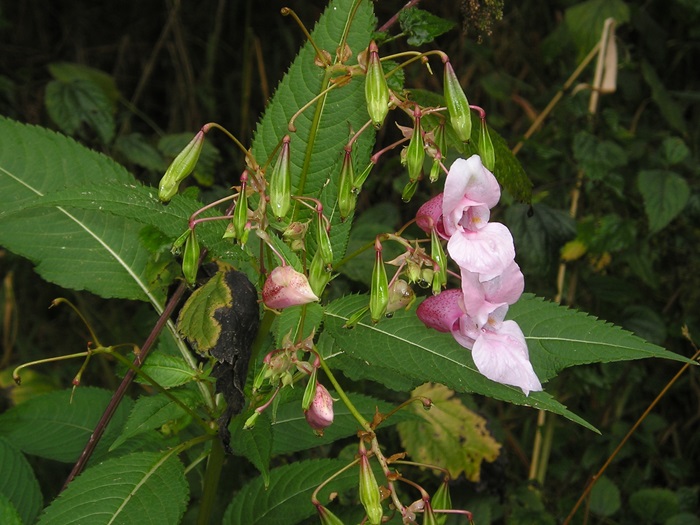
Why it's a problem
Policeman’s helmet is highly invasive in wetlands, streams, and damp woodlands. It displaces native and beneficial plants. Large infestations contribute to flooding and erosion by changing or stopping water movement.
People have used this species in gardens, but it escapes from where it is planted. It establishes in lowland riparian areas, including damp forests, streamsides, and roadside areas.
Plant description
Policeman’s helmet is a tall, hollow-stemmed, herbaceous (non-woody), annual (one year lifecycle) plant that is smooth and hairless with shallow roots. Plants range from 3 to 10 feet in height. Stems are very watery and break easily. Policeman’s helmet is native to the Himalayas.
Leaves are simple and oblong, ranging from 2-9” in length, with serrated edges and pointed tips. The leaves can be opposite (connected to the stem in pairs) or whorled (growing around the stem at the same level) in groups of 3.
Flowers resemble a British policeman’s hat, hence the common name. They are usually light pinkish-purple but can range from white to all shades of pink and purple.
Flowers form capsules that contain small black seeds. When touched, ripe bright green pods burst open and the seeds spring out 5 to 20 feet from the plant. Hence the family name, “touch-me-not.”
The base of the hollow stems and exposed roots are often reddish. Plants pull from wet soils easily due to their shallow roots. When broken, stems may make a popping sound and leak water.
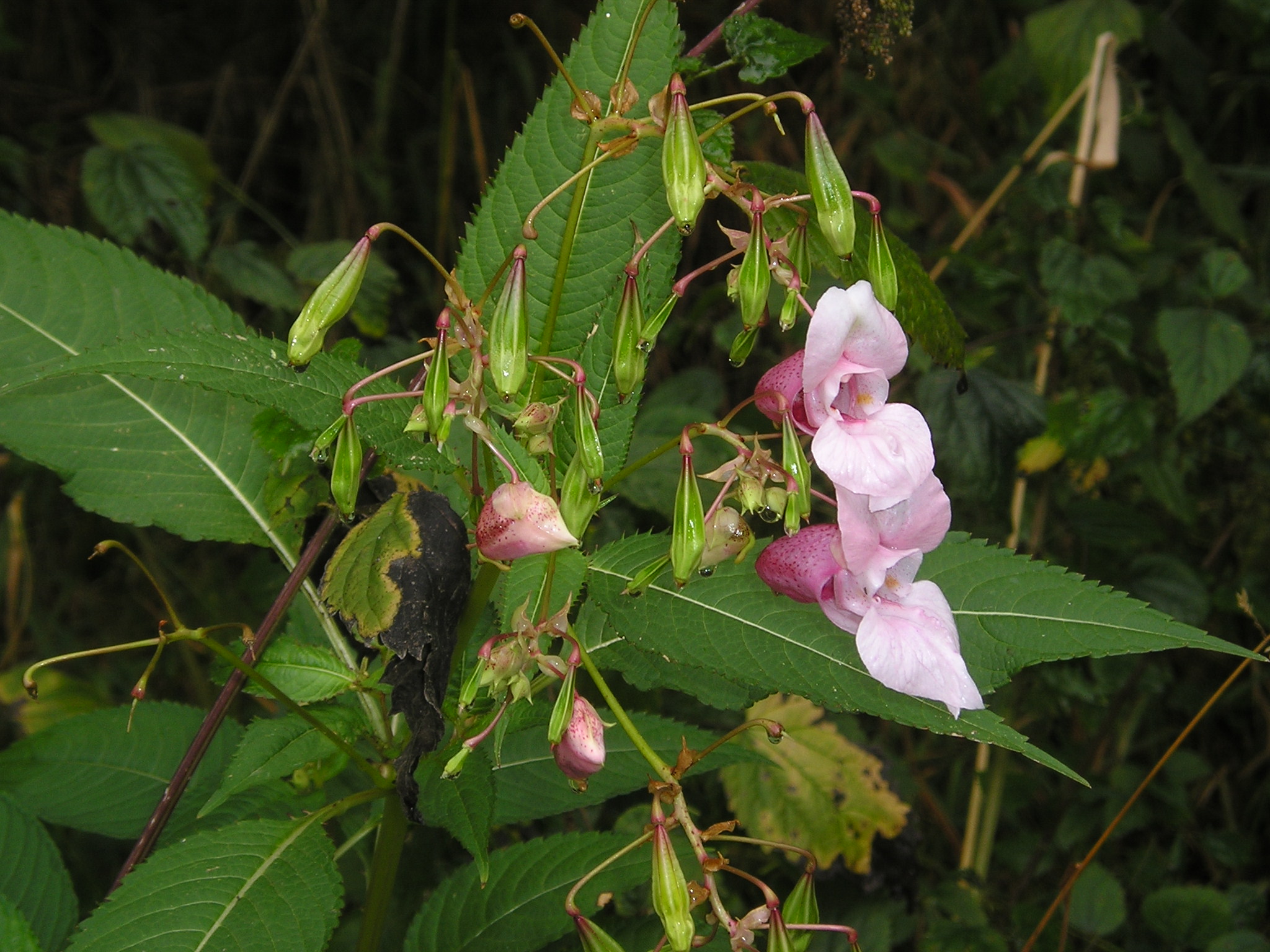
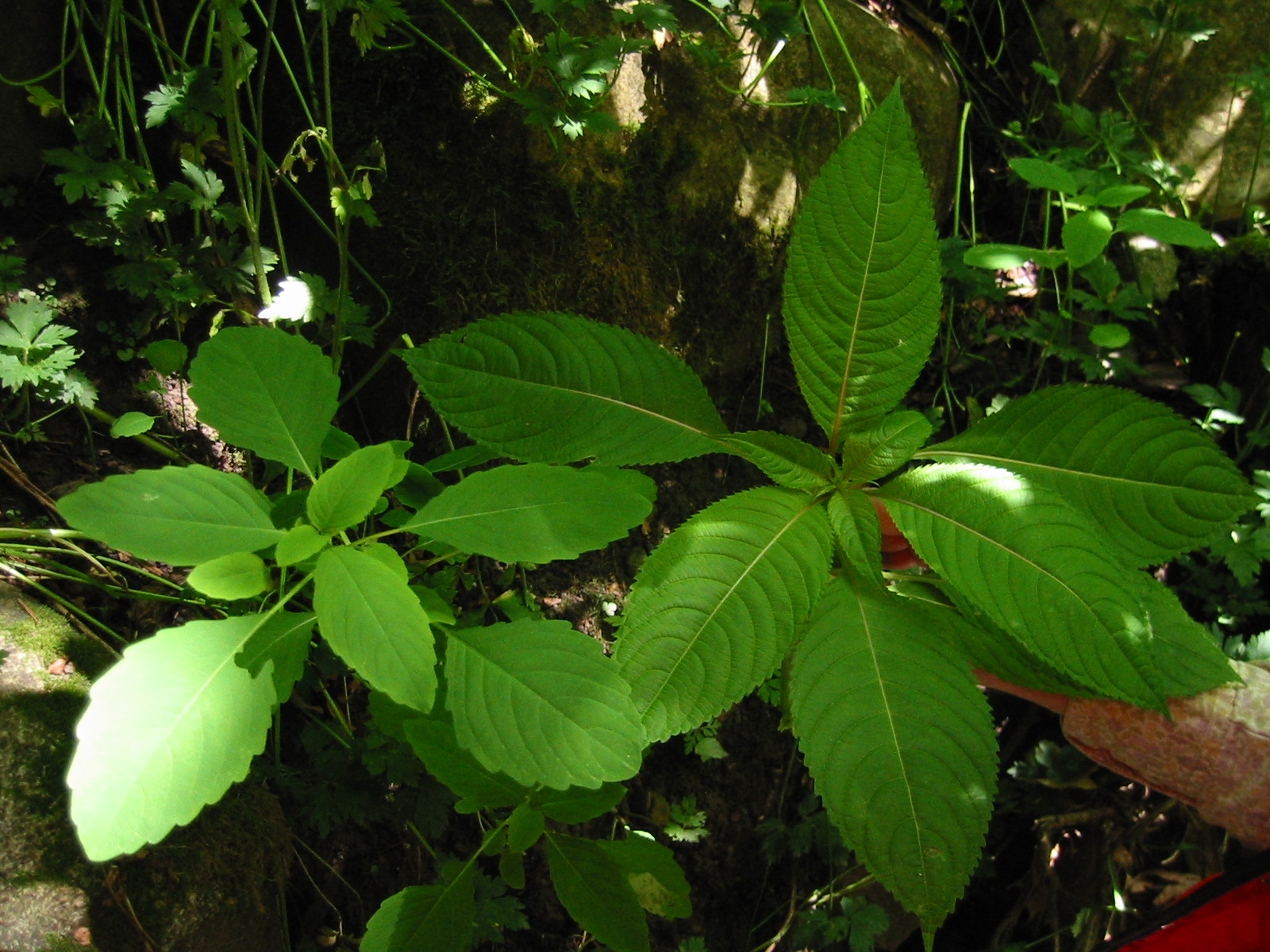
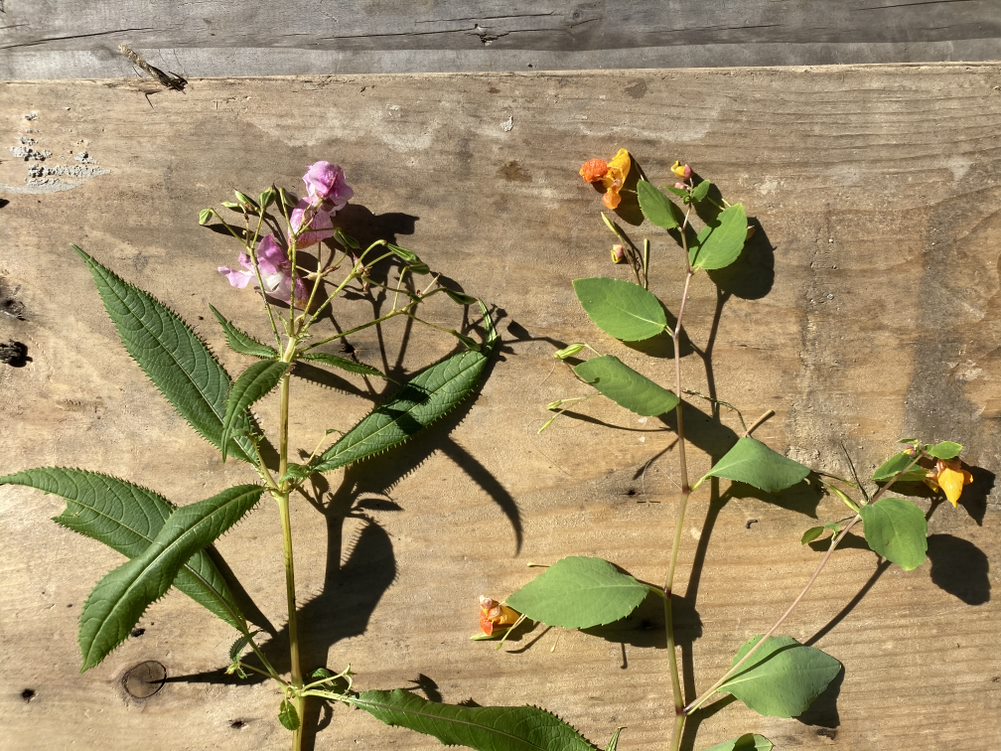
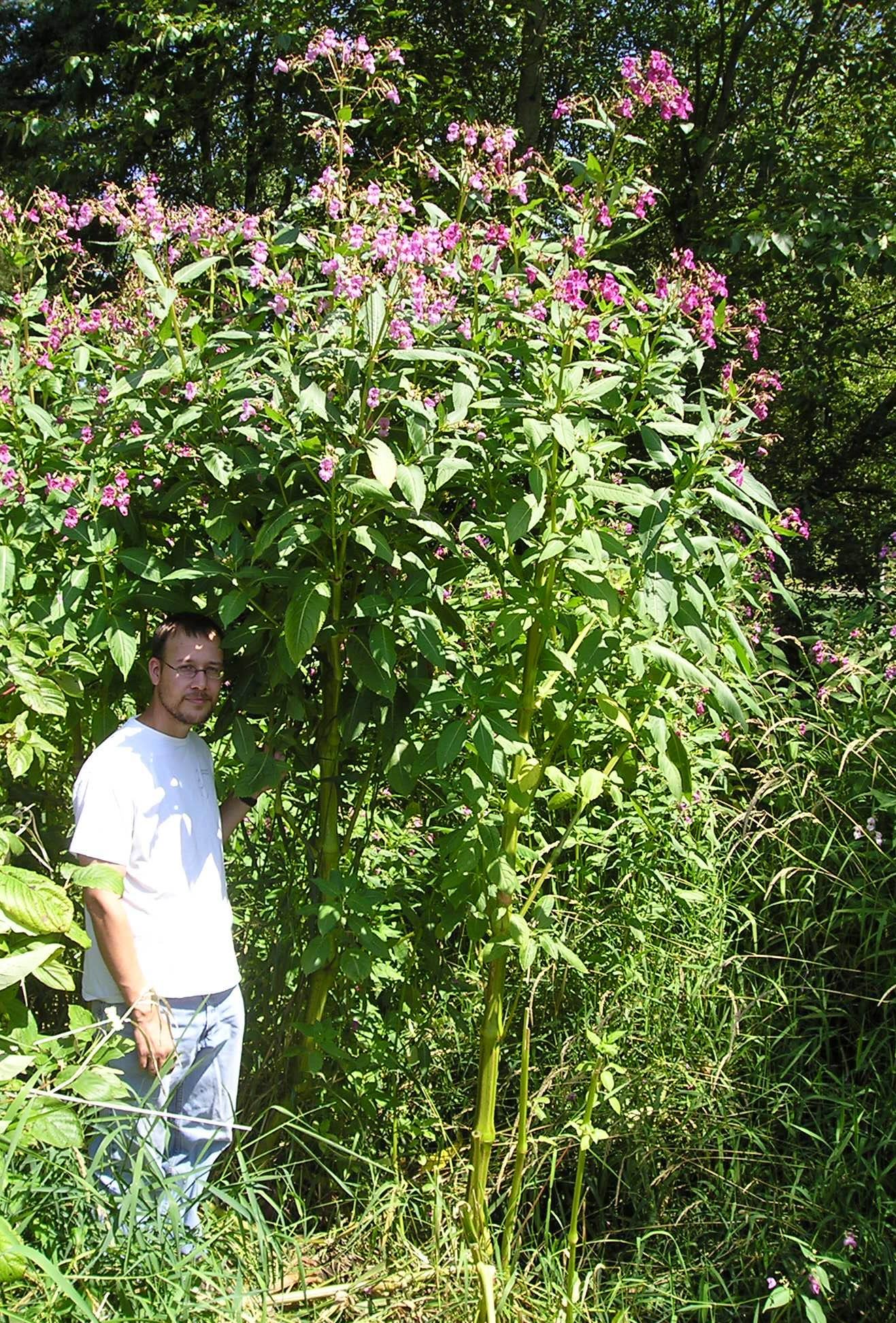

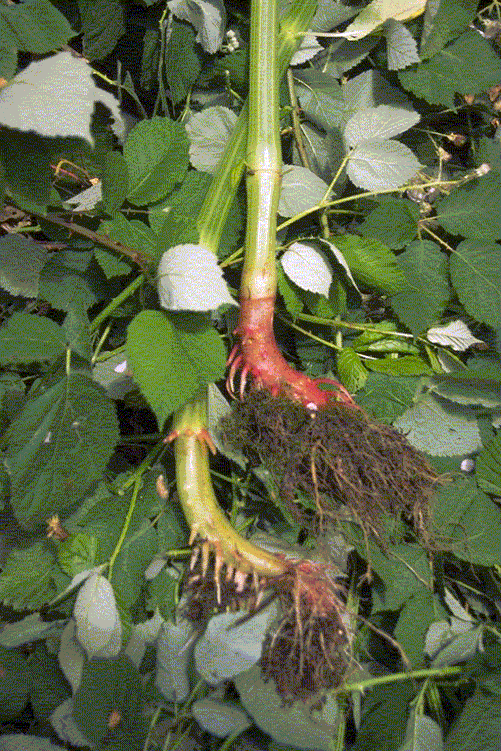
Be aware of look-alike plants
More information about some of the plants policeman’s helmet is often confused with:
When in doubt, take photos and share them with us or report them on iNaturalist.
What to do if you find it
Property owners are required to control policeman’s helmet on lands that they manage. Please notify us if you see policeman’s helmet growing in King County.
Our program staff can provide you with site-specific advice on how best to remove it. We map all known locations of regulated noxious weeds in order to help locate new infestations in time to control them.
Control methods
We recommend using a combination of methods to control noxious weeds. In areas with few weeds, it is important to act quickly before they become harder to control. Make a long-term plan as it often takes several years to get rid of most weeds. Start in the least infested areas first and then move into more heavily infested areas.
Manual control
Policeman’s helmet is an annual plant with relatively shallow roots. It is easy to pull during all life stages. We recommend hand-pulling for most removal efforts.
Pull or dig up plants in the spring or early summer when the soil is still soft. Make sure to do this before seed capsules form.
Seed capsules burst open when they are touched. To avoid spreading seeds, you can place a bag around the tops of the plants and then pull them out.
It is also effective to cut plants at the ground level with a mower or brush-cutter. This disturbs the soil less than pulling. Some plants will regrow if they are cut. Return after cutting to check for new growth.
Stem pieces can make new roots and keep growing. All stem fragments should be collected, crushed, and composted on a tarp or dry pavement. This will prevent them from continuing to grow.
Chemical control
Stay safe when using herbicide:
- Always read the label before use.
- Wear a long-sleeved shirt, long pants, shoes, and eye protection.
- Follow state and local regulations.
For large patches, herbicide treatment might be most efficient.
Avoid spraying where there is a chance that herbicide will enter a waterway or wetland unless you are using a state-approved aquatic herbicide and have the required permits and licenses to do so. Use of pesticides in water is regulated in Washington state. See Washington Department of Ecology Aquatic Pesticide Permits for details.
For more information or a site-specific recommendation in King County, contact the noxious weed program. For information in other locations, contact your local weed board or extension office.
Disposal instructions
Put plant material in sturdy plastic bags and dispose of with trash or take them to a sanitary landfill for disposal. Do not put in yard waste or compost bins.
As an alternative to disposal, you can leave the stems on site to decompose. The stems can continue to grow when piled up or left on damp ground. To prevent this, pile the stems on a tarp, crush them by stomping on them, and leave them until they decompose. For single stems, elevate above ground (for instance, on a tree or bush stem) to allow the stem to dry out thoroughly. Once stems are fully dried out or decomposed, they can be safely left on-site.
Noxious Weed Disposal - Washington State Noxious Weed Control Board
Learn more about policeman's helmet
Read policeman's helmet fact sheet (475KB)
This fact sheet is also available in these languages:

 Translate
Translate